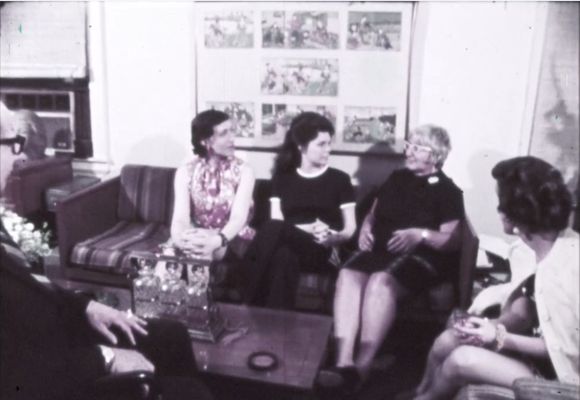
Email us to revise your entry or request it to be deleted.
United States of America
Sunrise Films
Colour
16mm
English/English
Want to add a content warning? Email us!
In 1971, the Erickson Educational Foundation (EEF)–an organization committed to raising awareness and sharing resources around transgender issues, launched by trans philanthropist Reed Erickson–funded the production of I AM NOT THIS BODY, a 25-minute educational film directed by Columbia documentary students Richard Kramisen and Sonya Baevsky. One of the first films of its kind, I AM NOT THIS BODY deployed the spontaneous formal language of cinéma vérité to explore transition through a refreshingly direct and personal dialogue between two transgender women, Lyn Raskin and Deborah Hartin, the pioneering gynecologist Dr. Leo Wollman, EEF director Zelda Suplee, and actress Pamela Lincoln.
Block Museum - Northwestern University. “I AM NOT THIS BODY (1971) with Trans Science Researcher Dr. Os Keyes.” Accessed February 3, 2025. https://www.blockmuseum.northwestern.edu/cinema/2025/i-am-not-this-body-1971-with-trans-science-researcher-dr-os-keyes.html.In 1971 the EEF sponsored production of a 28-minute documentary film called “I am Not This Body,” which featured a group discussion in the EEF’s New York office between Pamela Lincoln, described as “a famous television and movie actress,” Zelda Suplee, Dr. Leo Wollman (a general practitioner trained by Harry Benjamin, then-president of the American Society of Psychosomatic Dentistry and Medicine, and an avid medical spokesperson on transsexualism), and two transwomen, one of whom was introduced as pre-operative and the other as post-operative. In the film, Lincoln was ostensibly seeking out information on transsexualism from the perspective of someone who knew nothing about it, and her inclusion in the film was presumably in part to add celebrity appeal and to encourage transsexualism as a topic of interest to the mainstream public. The pretense of this film was importantly consistent with the EEF’s overall perspective, demonstrating the interchange between medical experts, trans people themselves, the uneducated public, the media, and the EEF, whose role was to negotiate this exchange. The film was available to be rented from the EEF office for a moderate fee and could also be requested as part of an educational panel featuring Suplee and several transsexuals. For example, in 1971 the film was presented to students in the psychology department of Farleigh Dickinson University in New Jersey as part of such a panel. Likewise, it was shown at the State University of New York at Stony Brook, Long Island in several departments: the University Health Services Department, the College of Medicine and Allied Health Professions, and also to a class of paramedics. The following year, it was used in a graduate class in Human Sexuality at the University of Connecticut. In April of 1972, it was also shown to approximately 135 people at a presentation on transexualism led by EEF grantee and criminologist Dr. Marie Mehl, who had by then become the EEF Director of Education and Research, at the Midwestern Regional Conference of the American Humanistic Psychology Association in Chicago.The film was also selected to be screened at the Brooklyn Arts & Culture Association’s Annual Film Festival in October of 1971.
Devor, Aaron, and Nicholas Matte. “Building a Better World for Transpeople: Reed Erickson and the Erickson Educational Foundation.” International Journal of Transgenderism 10, no. 1 (October 12, 2007): 47–68. https://doi.org/10.1300/J485v10n01_07.-
Producer
-
Director
-
Editor
-
Self
-
Self
-
Self
-
Self
Email us to revise your entry or request it to be deleted.

